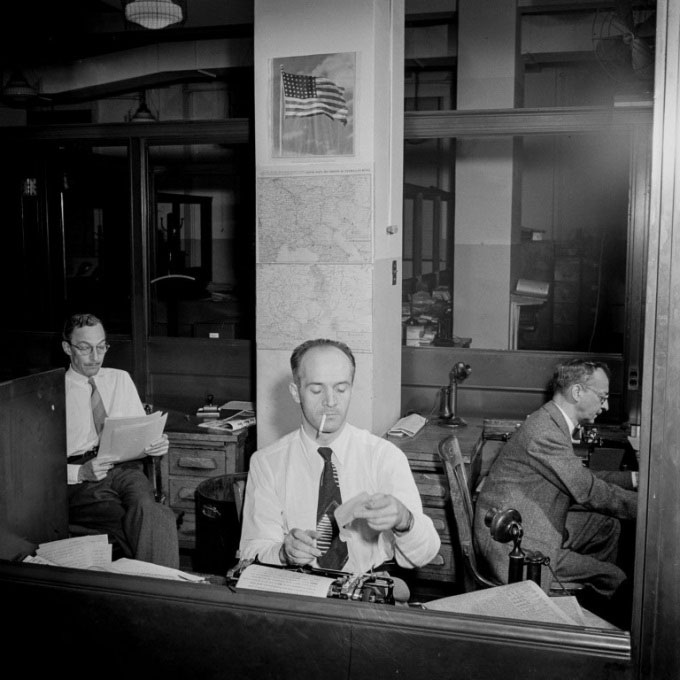Before the Internet, How did The New York Times do manual newspapers?
A dozen years ago, when the Internet was a non-existent concept, content production was done entirely manually, requiring a large amount of manpower with meticulousness and extremely high accuracy.
The New York Times (NYT) was born on September 18, 1851 with the original name of New York Daily Times by two co-founders, Henry Jarvis Raymond and George Jones. With a contingent of reporters in hundreds of countries, through many ups and downs, NYT owns 127 Pulitzer prizes, ranked as the second largest newspaper in the United States.
Throughout the 168-year history of existence and development, NYT has always held its position as a "mirror" reflecting on journalistic life by always adapting and innovating according to the trend of the times.

Decades ago, when the Internet was a non-existent concept, content production was done entirely manually, requiring a large amount of manpower with meticulousness and extremely high accuracy. In September 1942 photographer Marjory Collins visited the NYT headquarters and recorded memorable images of NYT's 'publishing process' for a while.

From the news department, was the room with a series of tables lined up, each of which was a reporter working at full capacity on hot news.Here, the reporter's articles will be formed, gathered and then sent to the editorial office for editors to edit.

Also here, the key editors discussed articles as well as editorial work for a number of newspapers.All their discussions are carefully recorded.Because it is a daily newspaper with many categories, NYT always has editors who specialize in each section.


The components that make up a newspaper, including journalists' articles, newsletters sent from all over the world, from major news agencies like AP, are copied, arranged, Sort and then send to a manual printer to run the draft.

Photo journalism is one of the very important areas, NYT's photo-making department is one of the key areas of the newspaper.The photo room is the area where all photos are sent from all over.With high requirements for the overall quality of the entire newspaper, the stitching of the photo is also handled very carefully.

After the process of processing and editing the text and photos, on the page is complete, all parameters from this stage are clearly written on a statistics panel hanging between the editorial office.The editors will finalize these parameters, then the newspaper page will be finalized and transferred to the office type office.

When printing techniques are outdated, the typesetting process is one of the most important stages in the press printing process.This stage is made entirely by hand.The typesetting staff will have to work extremely carefully and meticulously.Although careful, it must be as fast as possible.

After the typesetting process will be the printing stage.Large scrolls are estimated to print about 1,300 newspapers.The previously molded cores will be bent, numbered and inserted into the printer.At these printers, molds will be rolled over the paper surface to form a complete newspaper page.


The next part will be that the printer starts working.When the first prints come out, the printer will check again.If things don't have this problem, the printer will continue to operate and newspapers will be officially released.Finally, the newspaper was transferred from the printing house to the newspaper counters and to the readers.
- Online newspapers surpassed the paper in America
- Read electronic newspapers to help you live longer
- Secret Internet data centers in New York
- Revealing the truth about aliens from 100 years ago
- Why does the internet sometimes lose connection?
- Mechanical connoisseurs, love creation
- Students study poorly due to using computers?
- Shenzhou 10 trials of orbital assembly
- Admire the cities of the world Old and Present
- Europeans 'throw away' printed newspapers, love the Web
- Sunset phenomenon Manhattanhenge in New York
- Photograph of extremely rare Persian leopard in Russia
 'Fine laughs' - Scary and painful torture in ancient times
'Fine laughs' - Scary and painful torture in ancient times The sequence of numbers 142857 of the Egyptian pyramids is known as the strangest number in the world - Why?
The sequence of numbers 142857 of the Egyptian pyramids is known as the strangest number in the world - Why? History of the iron
History of the iron What is alum?
What is alum?